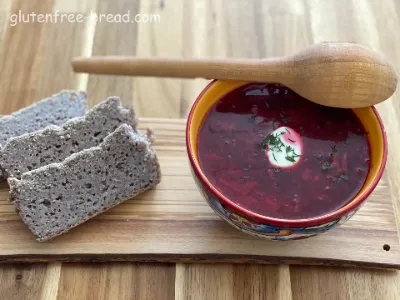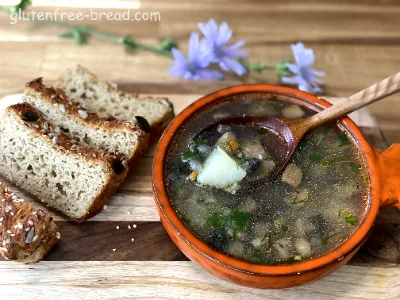Additional info
Gluten-free soups are soups that do not contain any ingredients derived from wheat, barley, rye, or other gluten-containing grains. Here's how gluten-free soups are typically prepared and what to look for when selecting or making them:
Broth Base: Start with a gluten-free broth or stock. This can be homemade using gluten-free ingredients like vegetables, meat, or fish, or store-bought varieties that specifically indicate they are gluten-free.
Vegetables and Proteins: Add a variety of vegetables, meats, seafood, or legumes to your soup. These ingredients are naturally gluten-free, but it's important to check if any pre-seasoned or pre-cooked options might contain gluten additives.
Thickeners: Many soups are thickened with flour or wheat-based roux. For gluten-free soups, use alternatives like cornstarch, potato starch, arrowroot, or gluten-free flour blends to achieve the desired consistency.
Grains: If you want to add grains to your soup, choose gluten-free options such as rice, quinoa, corn, or gluten-free oats. Avoid barley, wheat berries, or other gluten-containing grains.
Flavorings and Seasonings: Use herbs, spices, and gluten-free seasonings to enhance the flavor of your soup. Be cautious of pre-packaged seasoning mixes, as they may contain gluten.
Condiments: Garnishes and toppings such as croutons or crackers are common in soups but can contain gluten. Opt for gluten-free alternatives or omit them entirely.
When selecting canned or pre-packaged soups, always read labels carefully to ensure they are labeled gluten-free or do not contain any gluten ingredients. Cross-contamination can also be a concern, so soups made in facilities that handle gluten should be verified through labeling or certification.
By being mindful of ingredients and preparation methods, you can enjoy a wide variety of delicious gluten-free soups that are safe for those with gluten intolerance or celiac disease.









